With the passing of the Consolidated Appropriations Act for 2023, a major retirement overhaul was slipped into the spending package, meaning more people could have access to employer-sponsored retirement plans going forward. The Secure 2.0 Act of 2022 is a long-awaited expansion of the original provisions within the SECURE Act from 2019.
The new SECURE Act bill expands on many different retirement plan items, including requiring automatic enrollment, increasing catch-up contributions, increasing the minimum age for required minimum distributions, and much more.
Here is a breakdown of some of the major items included in the Secure 2.0 Act of 2022.
Automatic Enrollment
The most important and most universally applicable provision of the SECURE 2.0 Act, effective for plan years beginning after 2023, is the requirement for 401(k) and 403(b) Plan Sponsors to automatically enroll eligible employees into their employer-sponsored plan once the employee becomes eligible to participate. The automatic enrollment deferrals will be required to start at a minimum of 3% of an employee’s wages and increase each year until a deferral amount of 10% is reached.
Employees will still be allowed to opt-out of the automatic enrollment if they choose. However, employers will be required to have this provision in place within their retirement plan. This automatic enrollment requirement applies to all existing defined-contribution plans, if they have over 10 employees, the business has existed for over three years, or the employer is not a church or government entity.
If needed, there will be a grace period for plan sponsors to correct mistakes without penalty when establishing the new automatic enrollment and contribution escalation requirements into their retirement plans.
Catch-Up Limits
A big benefit for participants 50 years of age or older is the catch-up contribution, which allows for an additional $7,500 contribution into most retirement plans for 2023 and $3,500 for SIMPLE plans, with these amounts adjusted for inflation annually.
Under the SECURE 2.0 Act, starting in 2025, an additional increase in the catch-up contribution amount will be available for those participants between the ages of 60 and 63. For those eligible participants, the catch-up contribution amount increases to $10,000 for most retirement plans and $5,000 for SIMPLE plans, subject to annual inflation adjustments.
Additionally, starting in 2024, the IRA catch-up limit will be increased for inflation each year instead of the flat $1,000 per year increase currently in place. Finally, all catch-up contributions will be subject to the ROTH (after-tax) rules beginning in 2024.
Distributions
Under the current SECURE Act, plan participants must take minimum distributions out of their retirement account at age 72. Under the SECURE 2.0 Act, over the next ten years, the required minimum distribution age will increase again. Starting in 2023, the required minimum distribution age will be increased to age 73 for participants who turn age 72 after 2022 and age 73 before 2033. For participants who turn age 74 after 2032, required minimum distributions do not begin until they reach age 75. This means that if a participant turns age 72 in 2023, they do not need to take a required distribution until they reach age 73, thus, delaying the first distribution requirement for a year.
The SECURE 2.0 Act also allows for participants to make an early withdrawal from their retirement account without incurring a penalty because of a federally declared disaster, as long as the distribution is made within 180 days of the disaster and an economic loss resulted from the federal disaster. After 2023, the new act also allows penalty-free early withdrawals from a retirement account by a victim of domestic violence, participants diagnosed with a terminal illness, or due to a personal financial emergency (all subject to different fund limitations).
Other Items for Employer-Sponsored Retirement Plans
The SECURE 2.0 Act has other various items that benefit both the Plan Sponsor and the participants of a retirement plan. Plan Sponsors will have the ability to provide matching contributions to participants on a ROTH (after-tax) basis if desired and not just on a pre-tax basis as currently in place.
Under the SECURE 2.0 Act, the length-of-service requirement for part-time participants will be reduced from three years to two years for plan years beginning after 2024. The new Act will also eliminate the notification requirements currently in place for those unenrolled participants. However, it will require the Plan Sponsor to make an annual notification to these participants of plan requirements and encourage participation within the plan for plan years beginning after 2022.
If you’re an employer with questions, we can help. Reach out to The Whitlock Co. to request a consultation.

